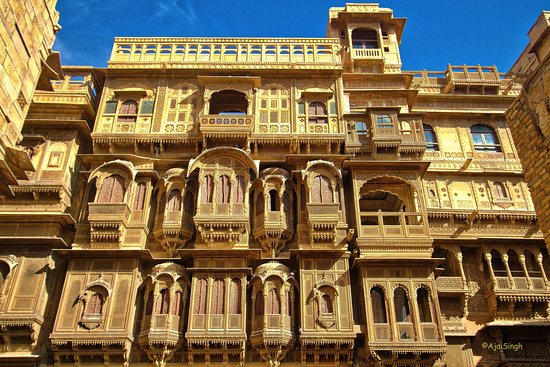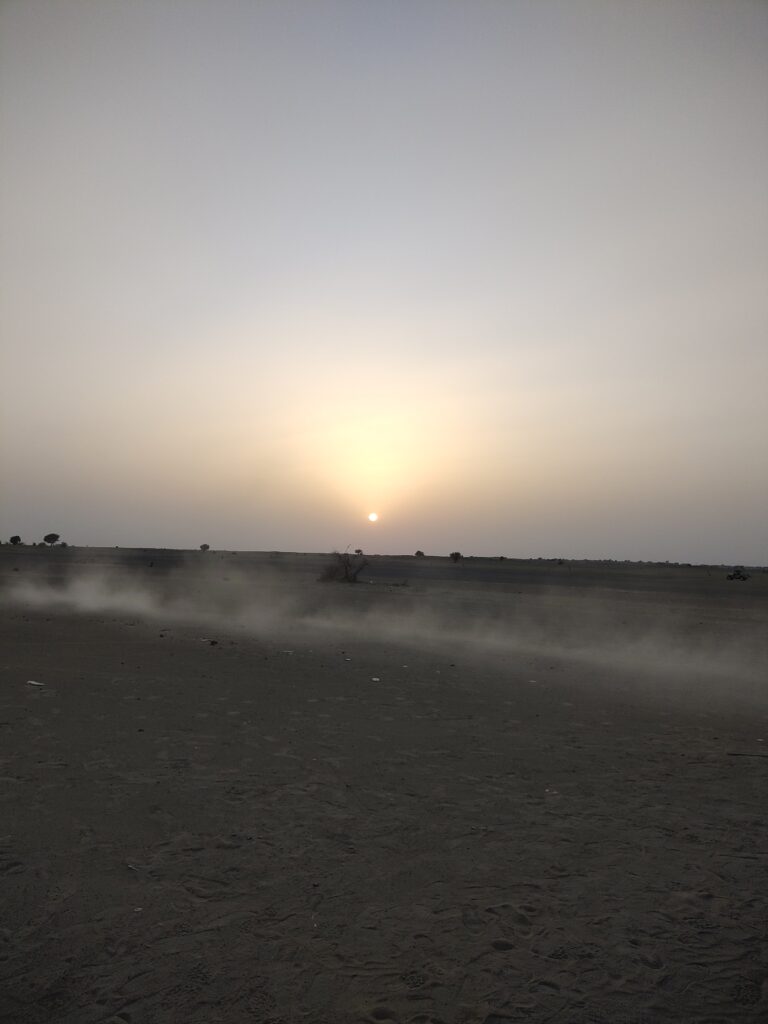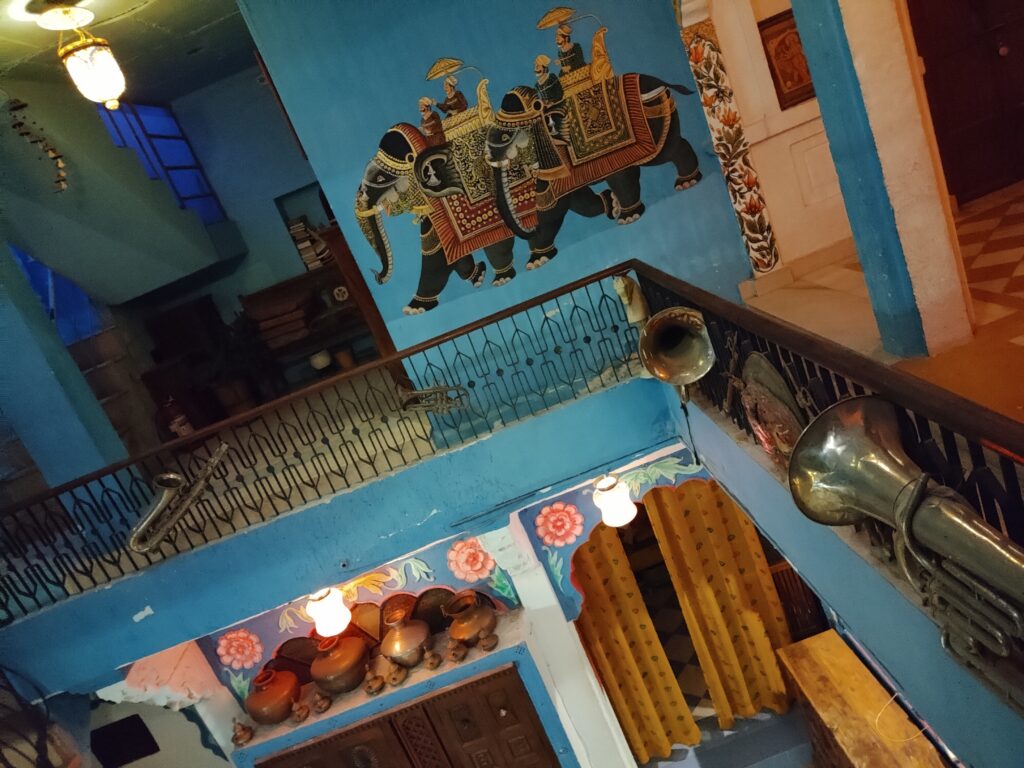Disclaimer: All the information shared is completely raw and to the best of my knowledge. For privacy purposes, the names of the people involved are not revealed. The reviews shared are personal and are not meant to hurt any sentiments, persons, authorities, or objects. This travelogue is written for educational and informational purposes only and to act as a memoir.
Click here to read PART – II
6 MINUTE READ

The following day, March 22nd, as it was our last day in the pink city and a pile of work was awaiting us, just after breakfast, we headed straight to our site, canceling our other plans for that day, which mainly included visiting Jantar Mantar and City Palace.
After much effort, we were able to get the rough drawings and the other information needed. So after lunch, we packed our bags, and we were off to take the train (Shalimar Exp.) at 17.45 hrs. to the city of deserts, Jaisalmer!
Jaisalmer – The Golden City

At 5.45 a.m. on the morning of March 23, we arrived in Jaisalmer, and it was really cold early in the morning. The Jaisalmer station was a beauty, having a wonderful façade with delicate detailing. While the travel department went off to search for vehicles, others waited under the blackish-blue sky of Jaisalmer.

After everything was arranged, we went to the Abu Safari Hotel. It was a very beautiful hotel again; its exterior has very intricate detailing and even has jharokhas, and the rooftop view of the city is just amazing. But as it was very early, we were able to get only three rooms for 24 of us. However, anyhow, we got ready and went to have our food.

The streets of Jaisalmer are quite wide and much cleaner than those of Jaipur. The houses are mostly built out of light-yellowish sandstone, which makes the city look like a golden city. After breakfast, we walked towards Jaisalmer Fort, as it was within walking distance.
Jaisalmer Fort

It is believed to be among the few “living forts” in the world, as approx. one-fourth of the old city’s entire population still resides within the fort. The fort has massive yellow sandstone walls that are tawny-lion color during the daytime but fade to a honey-gold color at dusk, thus camouflaging the fort in the yellow desert. Hence, it is also known as the “Golden Fort” or “Sonar Quila”. It is also classified as a UNESCO World Heritage Site.
We took a guide here to show us around this sheen fort, who then took us to Patwaon ki Haveli and then Nathmal ki Haveli.
Patwaon Ki Haveli

Patwaon ki Haveli is a cluster of five Havelis. It is the first and largest haveli to be constructed in Jaisalmer in about 55 years. Its amazing architecture, creative and intricate mirror works and carvings, beautiful paintings, and its rich yellow color are what make it unique and a favorite.
Nathmal Ki Haveli

Whereas, the Nathmal ki Haveli is a residential building but is famous for its architectural style, which is a fusion of Rajput and Mughal styles. Its attractive façade was designed in the shape of birds, elephants, flowers, bicycles, steam engines, soldiers, and many other intricate details.
All of these were within walking distance, so our travel cost was reduced. After visiting the Havelis, we had lunch, and then we started our journey to the sand dunes safari. As the hotel we were staying in had its safari agency, we escaped the work of searching for transport.
Two Jeeps were allocated for us. And they provided the entire package of the safari, which included travel, a camel safari, snacks, and dinner. It was indeed a long way, but everyone enjoyed it to the fullest.
The Thar Desert

Our caravan stopped at the Thar Desert, which is a largely arid area in north-western India covering an area of around 200,000 sq. km. and forming a natural boundary between India and Pakistan. It is even the world’s 20th-largest desert. In the thar, people did enjoy parasailing, and camel rides.
From there, we went to a camp for the Rajasthani light and sound show. People relished a lot there, dancing and singing. After a long and tiring day of enjoyment, we had a delicious Rajasthani thali for dinner. Everyone enjoyed the Rajasthan special “dal-bati-churma”.
Finally, the safari ended well, with everyone rejoicing en route, and we were back at the hotel. The tour of Jaisalmer was only for one day, so we hastily packed our bags and rushed for the station, as it was past 00:00 on the 24th of March, and we were already late.
Jodhpur – The Blue City

We boarded the Ranikhet Express from Jaisalmer to Jodhpur at 3 p.m. We arrived at the blue city around 8:00 a.m.
Jodhpur is known as the “blue city” because the majority of its houses are painted blue. The roads are not so wide but are of reasonable width, with drains passing from both sides. The localities are quite congested.

From the station, we went to the hotel, Yogi’s Hostel, which is one of the oldest hotels in Jodhpur and has a few ancient rooms as well as antique elements decorating the hostel. Again, as it was early morning, people hadn’t checked out of the hostel, so we had to wait until 10.30 hrs., and until then, we scheduled and rescheduled our plans and checked our finances for the coming days to go.
After the rooms were allotted and we were done with our breakfast, we went to visit Toorzi ka Jalra, which was again within walking distance.
Toorzi Ka Jalra

Toorzi ka Jalra is a massive stepwell with an intricate design that is over 200 feet deep. Its rose-red sandstone design and structure help onlookers comprehend the lifestyle of the earlier generations.
And then we strolled towards the Jaswant Thada.
Jaswant Thada

Jaswant Thada is also a cenotaph, serving as the cremation ground for the Rajut family of Mewar. It is built out of intricately carved sheets of marble, which are very thin and polished so that they emit a warm glow when illuminated by the sun. The grounds of the cenotaph include carved gazebos, a small lake, and a tiered garden.
From Jaswant Thada, we took autos and reached the Mandore complex, of course after having lunch.
Mandore Complex

The mandora complex is a suburb historical town. As it was almost dusk, we rushed to visit the mandore museum, which was on the verge of closing. After the museum, we walked around to visit the various monuments that were in the complex.
Along with a beautiful garden and an amazing landscape, the complex also contained monkeys. The garden contains numerous cenotaphs honoring Jodhpur’s rulers. Ravan Temple is just another attraction in Mandore.
After Mandore, we had some snacks outside the complex. Here, once again we witnessed the monopoly and the stubbornness of the auto-drivers, in fact, the most, but thanks to our travel people who handled them and the situation extremely well.
We returned to the hotel, and the evening was made free for all. So, whoever wanted to take a rest, explore the city, or go shopping did that, but the majority rested. We had our dinner a little late, the reason being that one, everyone was sleeping, and two, food was not available nearby.
…to be continued!